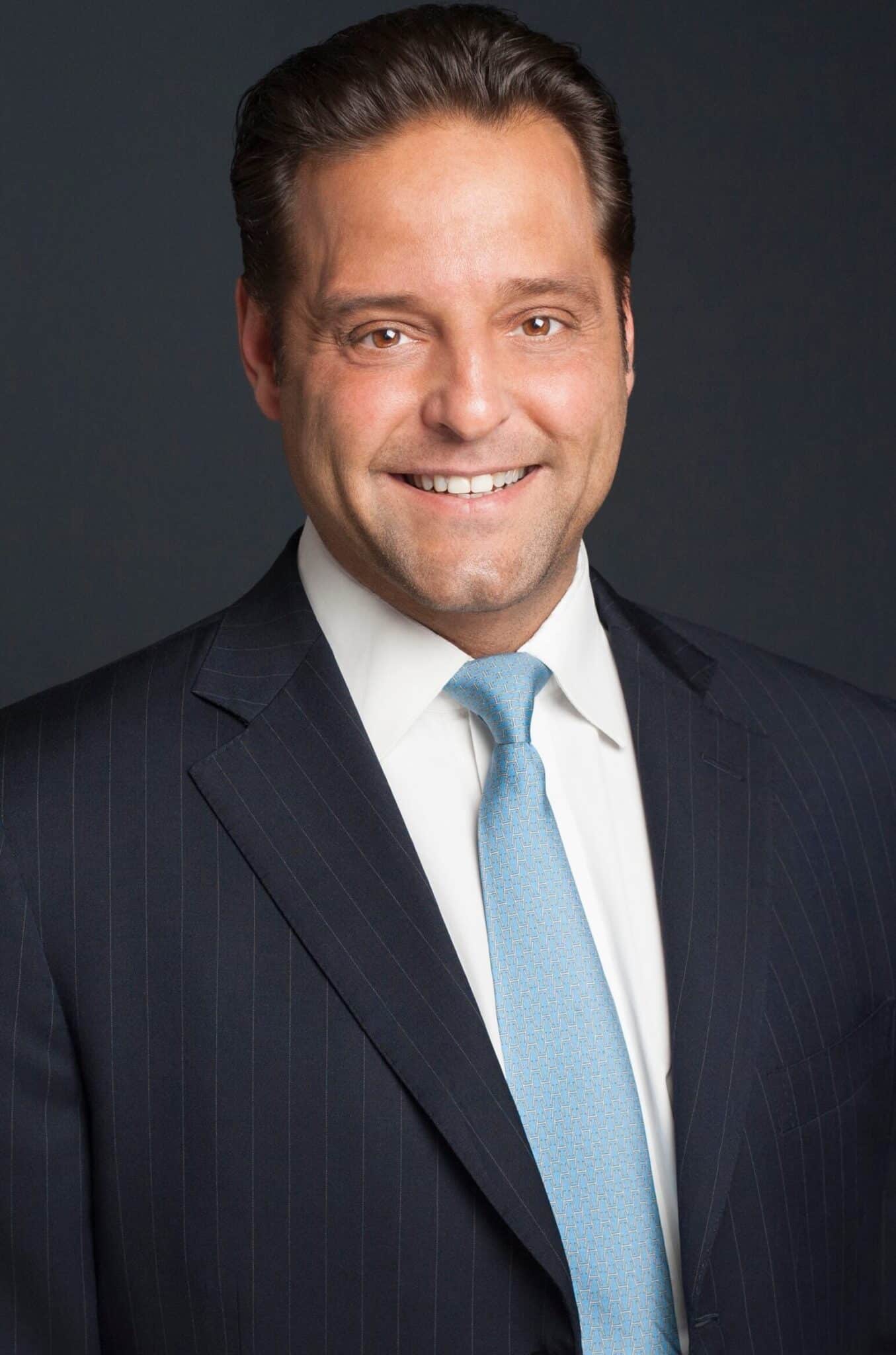Workplace WELLness: How Well-Being Starts with the Building
By Moira vandenAkker• 6 mins read•August 19, 2016

 What happens when you combine the world’s largest asset class – $180 trillion dollars of real estate – with the fastest-growing industry in the world – wellness? Ask Paul Scialla, the founder of the world’s first building standard focused exclusively on human health and wellness.
What happens when you combine the world’s largest asset class – $180 trillion dollars of real estate – with the fastest-growing industry in the world – wellness? Ask Paul Scialla, the founder of the world’s first building standard focused exclusively on human health and wellness.
Paul Scialla is the Founder of the International WELL Building Institute™ (IWBI™), which administers the WELL Building Standard™ (WELL) globally to improve human health and wellbeing through the built environment. Paul is also a member of the Board of Directors for the Chopra Foundation and a founding board member of the JUST Capital Foundation.
A former Partner at Goldman Sachs, Paul left Wall Street to pursue his interest in sustainability and altruistic capitalism, looking to merge the world’s largest asset class – real estate – with the world’s fastest growing industry – wellness.
PS: I did spend a considerable amount of time on Wall Street prior to moving on to this WELL Building venture. Towards the end of my career – it was about 18 years – I would say about five years prior to making my move, I noticed what I thought to be a pretty big gap regarding the sustainability movement in real estate, primarily focusing on energy and environmental impact and thought that there may not have been enough focus on how the built environment is impacting the occupants, the human condition.
Paul tells us how it was a combination of his societal and economic curiosities that led to the formation of Delos™ and then to the construct of the WELL Building Standard, the world’s first building standard focused exclusively on human health and wellness.
PS: I started to put together a think tank and research platform to really try to uncover what it would mean to bring forth a set of building protocols to compliment green building but also explore well building by looking to understand how we can best introduce preventative medical intentions into the way we design and operate our built environment.
So it was really a mix between societal curiosity in terms of how we can move the ball downfield on prevention and do so using a vehicle that we all use 90% of our time, which is the built environment (our homes, our offices, and our schools). But equally as curious from an economic standpoint what it would mean to merge the largest asset class in the world, $180 trillion dollars of real estate with the fastest growing and arguably most important industry in the world, health and well-being.
We asked Paul to tell us a little more about how the WELL Building Standard was derived and who was initially involved.
PS: Initially we were looking to get medical science and building science experts in the same room to try to understand how we could influence or impact health outcomes across originally a construct of various health domains, things like cardiovascular health, respiratory health, immune health, sleep health, cognitive health, and so on, and so forth. Once that original construct was put in place, we then continued to expand the platform to include thought leadership across many disciplines – not just medicine, architecture and design, but also technology, sustainability, and the folks that have been involved in some of crafting of the green rating systems out there to best understand how we could codify this into a set of protocols that could be used.
When you think of workplace wellness, you need to start from the ground up. In other words, you need to start with the actual built environment itself.
PS: When you look at the average $700 per employee per year that companies are spending on corporate wellness initiatives with regards to the various nutrition counseling programs, fitness programs, and access to various wellness initiatives it is pretty staggering to think that we haven’t considered starting with the actual built environment itself and the operational environment that people are spending all this time in.
All these ancillary programs are wonderful, but starting with a WELL Certified™ corporate office, ensures that the very basics, the 15 cubic feet around a person are passively introducing prevention and constantly delivering these intentions as opposed to counting on them to engage – which I know is a big challenge in some of these other corporate wellness initiatives. I certainly think the starting point should be the space; how it is designed and how it is operated.
Since the WELL Building Standard’s inception to today, there has been a huge shift in the degree of interest in healthier buildings and how the built environment can impact health initiatives.
PS: I think it’s interesting, we spent the better part five years really putting this program together, from the onset versus when we ultimately introduced the WELL Building Standard it feels like someone turned a light switch on and all anyone wanted to talk about was building performance and occupant health and well-being. We did not see that in the early days. Whether the introduction of the WELL Building Standard sparked that conversation or just helped it along; I am still staggered by the timing. […] So it really seems to be a remarkable either coincidence or just a manifestation of many things. You can’t go an hour in this industry without seeing another article or conference or conversation about health and wellness in the built environment and that certainly wasn’t the case five years ago.

Here is a bright idea for you – paying attention to the WELL Building Standard when making lighting upgrades can not only help you from an energy-efficient standpoint but also a health and wellness standpoint.
PS: As you get this secular shift into lighting upgrades, LED upgrades, what have you, look to piggyback on that decision and make sure that the lighting decision is informed by circadian science. We’re finding that a lot of folks going through lighting swaps can ensure that the space is also circadian appropriate – which gets into the category of light and its impact on human productivity, energy, mental acuity and sleeping patterns – for zero extra costs if they pay attention to the WELL Building Standard when going through the process.
When asked what challenges he sees on the horizon, Paul says accommodating a whole new generation of occupants that have grown up with health and wellness attributes being infused into almost every consumer product category they touch is going to be our next frontier.
PS: Millennials have grown up and health and wellness has been a norm into, you know, bad example, but water or vitamin water, that just wasn’t the case 20 years ago. You’ve had such a change and cultural shift and a focus on prevention and health and wellbeing. I think in the built environment in particular, whether it is homes or offices, developers are going to need to meet that new demographic and recognize that space is one of our largest if not our largest consumption. And how we define space needs to match how we define other product categories that people are consuming and certainly need to pay attention to the fastest growing industry in the world, health and well-being.
With the likes of Deepak Chopra, Leonardo DiCaprio and Nicholas LaRusso on Paul’s advisory board, we were curious to find out how some of our favorite celebrities and thought leaders have contributed to The WELL Building Standard’s success.
PS: We’ve been fortunate to have been able to assemble thought leadership across all types of sectors and every one of our board members is heavily engaged. From wellness luminaries like Deepak Chopra to sustainability advocates like Leonardo Dicaprio, former policymakers like HUD Secretary Mel Martinez and Congressman Gephardt, as well as doctors that are running world renowned institutions like the Mayo Clinic and the Cleveland Clinic. It has been a nice mix of people from different backgrounds. I think the common thread has been every single one of our board members is just so actively engaged in this because they believe in the societal impacts of the WELL Building movement.

WELL now has projects in 23 countries and Paul tells us how there is no particular region that has been slower than another to adopt The WELL Building Standard. He believes that speaks volumes to the fact that our biology is universal and consistent.
PS: You know it’s interesting, I travel a lot and I’ve been in a lot of different cities and a lot of different countries and continents over the last year or two, and seeing how this concept is universally embraced regardless of where you are in the world has been really gratifying. It kind of points to the humanity of this movement – our biology is universal. We are all the same, what impacts our biology is identical, whether you are in China, or California or Australia, the human condition is universal and we are all occupying the same types of spaces and we all have the same types of challenges to make sure that those spaces are conducive to better health outcomes.
Want more information on The WELL Building Standard? Visit wellcertified.com for details on how to get started – from informative content to the ability to register a project and eventually go through the process of achieving certification.
Do you believe wellness starts from the ground up? How much importance do you place on your built environment when optimizing your workplace?
Photos: Liam Andrew, Matthew Wiebe, Burak Kebapci, Yuriy Trubitsyn




